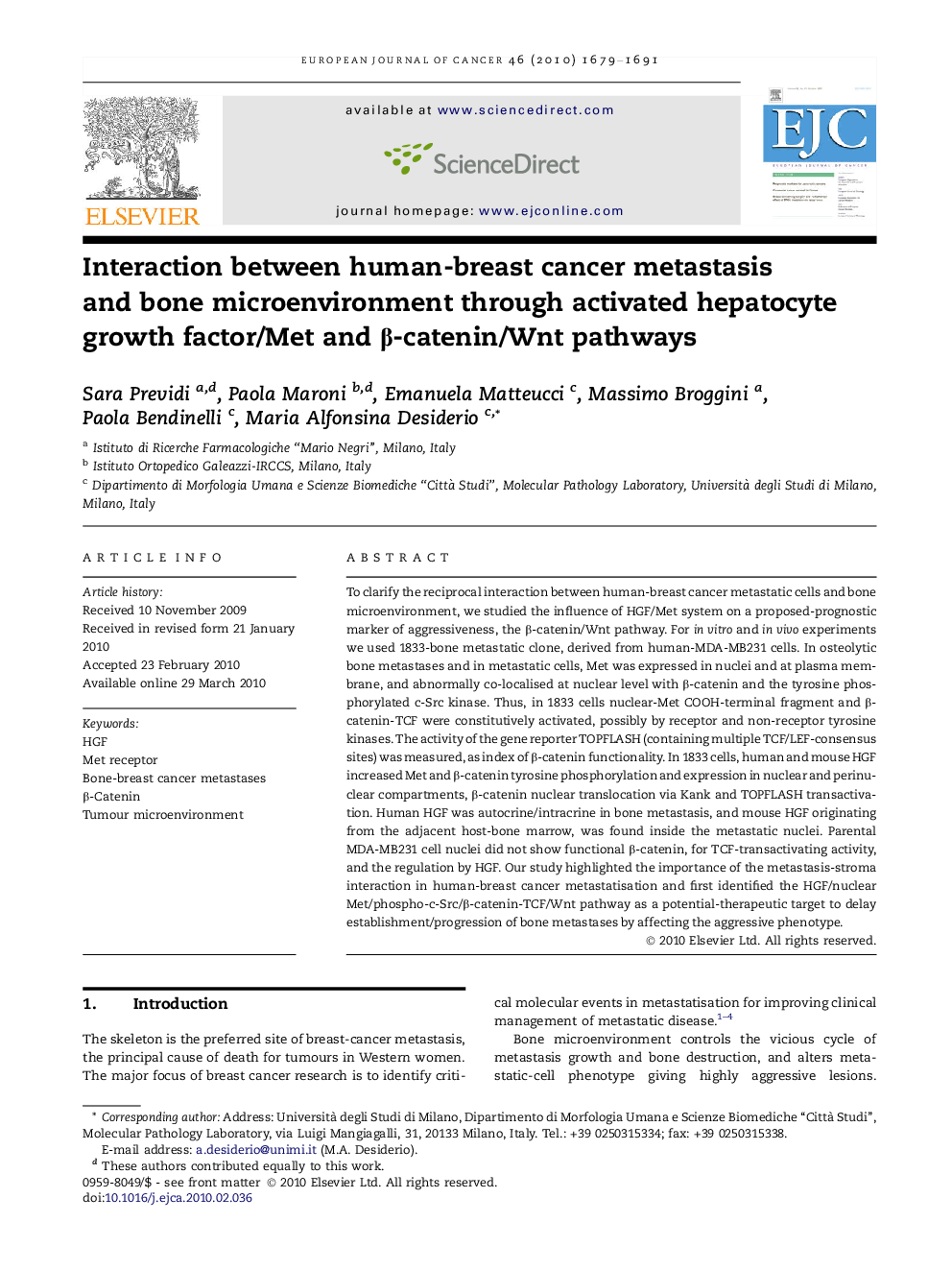| Article ID | Journal | Published Year | Pages | File Type |
|---|---|---|---|---|
| 2123409 | European Journal of Cancer | 2010 | 13 Pages |
Abstract
To clarify the reciprocal interaction between human-breast cancer metastatic cells and bone microenvironment, we studied the influence of HGF/Met system on a proposed-prognostic marker of aggressiveness, the β-catenin/Wnt pathway. For in vitro and in vivo experiments we used 1833-bone metastatic clone, derived from human-MDA-MB231 cells. In osteolytic bone metastases and in metastatic cells, Met was expressed in nuclei and at plasma membrane, and abnormally co-localised at nuclear level with β-catenin and the tyrosine phosphorylated c-Src kinase. Thus, in 1833 cells nuclear-Met COOH-terminal fragment and β-catenin-TCF were constitutively activated, possibly by receptor and non-receptor tyrosine kinases. The activity of the gene reporter TOPFLASH (containing multiple TCF/LEF-consensus sites) was measured, as index of β-catenin functionality. In 1833 cells, human and mouse HGF increased Met and β-catenin tyrosine phosphorylation and expression in nuclear and perinuclear compartments, β-catenin nuclear translocation via Kank and TOPFLASH transactivation. Human HGF was autocrine/intracrine in bone metastasis, and mouse HGF originating from the adjacent host-bone marrow, was found inside the metastatic nuclei. Parental MDA-MB231 cell nuclei did not show functional β-catenin, for TCF-transactivating activity, and the regulation by HGF. Our study highlighted the importance of the metastasis-stroma interaction in human-breast cancer metastatisation and first identified the HGF/nuclear Met/phospho-c-Src/β-catenin-TCF/Wnt pathway as a potential-therapeutic target to delay establishment/progression of bone metastases by affecting the aggressive phenotype.
Related Topics
Life Sciences
Biochemistry, Genetics and Molecular Biology
Cancer Research
Authors
Sara Previdi, Paola Maroni, Emanuela Matteucci, Massimo Broggini, Paola Bendinelli, Maria Alfonsina Desiderio,
